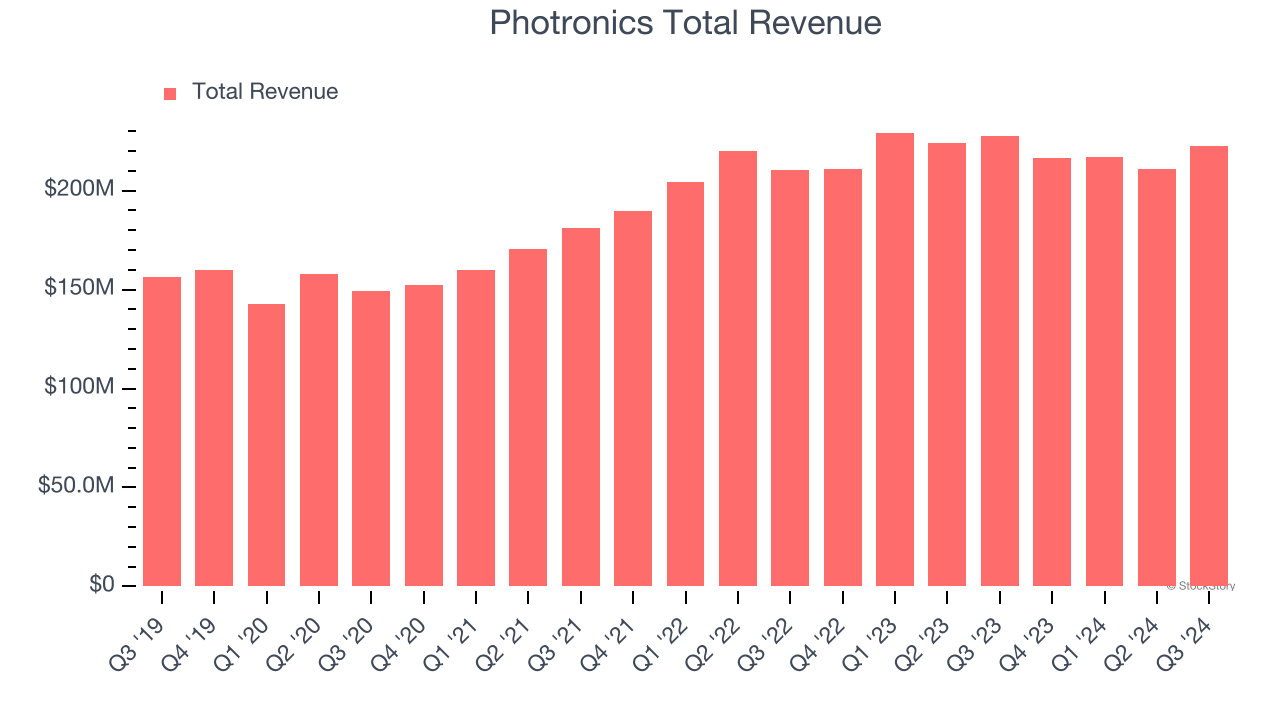
Semiconductor photomask manufacturer Photronics (NASDAQ: PLAB) will be reporting results tomorrow before market hours. Here’s what you need to know.
Photronics beat analysts’ revenue expectations by 2.1% last quarter, reporting revenues of $222.6 million, down 2.1% year on year. It was a very strong quarter for the company, with a solid beat of analysts’ EPS estimates and revenue guidance for next quarter slightly topping analysts’ expectations.
Is Photronics a buy or sell going into earnings? Read our full analysis here, it’s free.
This quarter, analysts are expecting Photronics’s revenue to decline 2.9% year on year to $210 million, a reversal from the 2.5% increase it recorded in the same quarter last year. Adjusted earnings are expected to come in at $0.47 per share.

Analysts covering the company have generally reconfirmed their estimates over the last 30 days, suggesting they anticipate the business to stay the course heading into earnings. Photronics has missed Wall Street’s revenue estimates four times over the last two years.
Looking at Photronics’s peers in the semiconductor manufacturing segment, some have already reported their Q4 results, giving us a hint as to what we can expect. Kulicke and Soffa’s revenues decreased 3% year on year, beating analysts’ expectations by 0.7%, and Nova reported revenues up 45.1%, topping estimates by 2.3%. Kulicke and Soffa’s stock price was unchanged after the results, while Nova was up 9.2%.
Read our full analysis of Kulicke and Soffa’s results here and Nova’s results here.
Investors in the semiconductor manufacturing segment have had steady hands going into earnings, with share prices flat over the last month. Photronics is down 3.2% during the same time and is heading into earnings with an average analyst price target of $35 (compared to the current share price of $21.90).
Today’s young investors won’t have read the timeless lessons in Gorilla Game: Picking Winners In High Technology because it was written more than 20 years ago when Microsoft and Apple were first establishing their supremacy. But if we apply the same principles, then enterprise software stocks leveraging their own generative AI capabilities may well be the Gorillas of the future. So, in that spirit, we are excited to present our Special Free Report on a profitable, fast-growing enterprise software stock that is already riding the automation wave and looking to catch the generative AI next.





